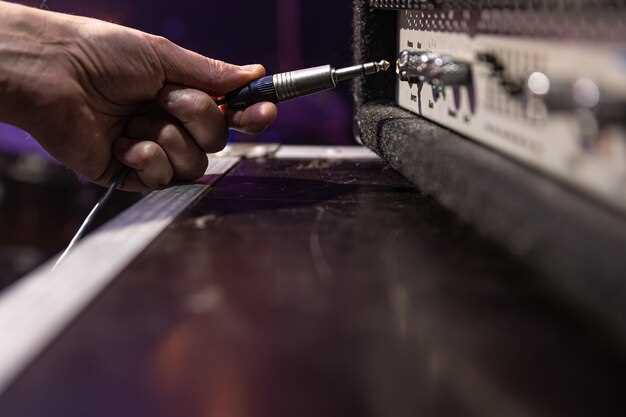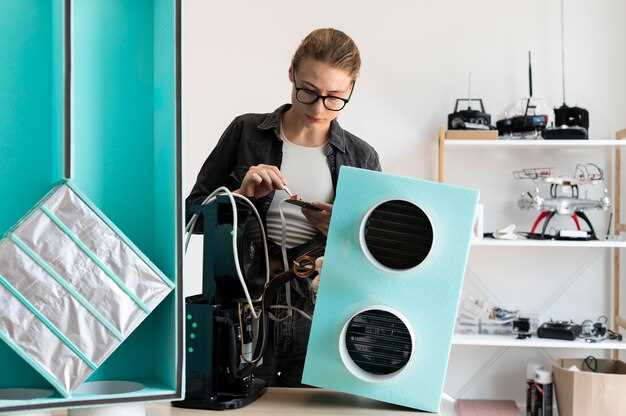

When it comes to enhancing your car’s audio experience, understanding how to properly wire your new stereo system is essential. A well-installed stereo not only elevates your listening pleasure but also ensures the longevity and performance of your equipment. In this comprehensive guide, we will walk you through the necessary steps to expertly harness the power of your car’s sound system.
Wiring your stereo system may seem like a daunting task, especially for those unfamiliar with automotive electronics. However, with a basic understanding of the components involved and the right tools, you can confidently tackle this project. We’ll cover everything from understanding color codes on wiring harnesses to connecting speakers, amplifiers, and head units, ensuring you have all the knowledge needed to achieve optimal sound quality.
In addition to proper wiring techniques, we’ll provide tips on troubleshooting common issues that may arise during installation. Whether you’re upgrading your existing system or installing a new setup from scratch, this guide aims to equip you with the skills needed to create an impressive audio environment in your car. Get ready to transform your driving experience with a powerful new stereo system!
Choosing the Right Wiring Harness for Your Car Model

When installing a new stereo system in your car, selecting the correct wiring harness is crucial for seamless integration and performance. The wiring harness connects your new stereo to the existing wiring of your vehicle, enabling power supply and audio signals without hassle.
Here are key factors to consider when choosing the appropriate wiring harness:
- Compatibility: Ensure the harness is compatible with your specific car model and make. Check the manufacturer’s description for listings of compatible vehicles.
- Connector Type: Different vehicles use various connector types. Identification of the connector style in your car will guide you in selecting the right harness.
- Wiring Schematics: Review the wiring diagrams of both your new stereo and your car’s audio system. This will help in identifying the correct connections for speakers, power, and ground wires.
- Quality of Materials: Opt for a harness made from durable materials that can withstand wear and tear. A well-constructed harness ensures a reliable connection and longevity.
- Ease of Installation: Look for harnesses that promise a plug-and-play installation. This feature significantly reduces the installation time and complexity.
Once you have identified the right wiring harness for your vehicle, follow these steps during installation:
- Disconnect the car battery to avoid any electrical short circuits.
- Remove the factory stereo unit following the vehicle’s service manual.
- Connect the harness to the new stereo according to the wiring diagram.
- Attach the harness to your car’s audio connector, ensuring a secure fit.
- Reconnect the car battery and test your new stereo system before finalizing your installation.
Choosing the right wiring harness not only simplifies the installation process but also provides a stable and efficient connection for your new car stereo system, enhancing your overall audio experience.
Step-by-Step Process for Connecting Your Stereo to the Wiring Harness

Connecting your car stereo to the wiring harness is a crucial step in the installation process. Follow these detailed steps to ensure a successful connection.
1. Preparation: Before starting, gather all necessary tools, including wire strippers, crimp connectors, and a soldering iron if you prefer a more permanent connection. Make sure your car is parked, and the ignition is off to avoid any electrical issues.
2. Identify the Wiring Harness: Locate the vehicle’s factory wiring harness. This is usually found behind the dashboard, where your old stereo was previously connected. It contains color-coded wires which correspond to power, ground, speakers, and other functions.
3. Match Wire Colors: Refer to the wiring diagram specific to your car model and the new stereo. This guide will help you match the wires from the wiring harness to those coming from your stereo unit. Common color codes include red for power, black for ground, and various colors for speakers.
4. Strip Wire Ends: Use wire strippers to carefully strip a small section of insulation off the ends of each wire you will connect. Ensure that you expose just enough copper to make a solid electrical connection without risking any short circuits.
5. Connect Wires: Depending on your preference, you can either twist the wires together and cover them with electrical tape or use crimp connectors for a more secure connection. For optimal strength, solder each connection and cover it with heat shrink tubing or electrical tape.
6. Connect the Stereo: Attach the other ends of the wires to the corresponding terminals on your new stereo. Ensure that you double-check each connection, especially the power and ground wires, for correct placement.
7. Secure Wiring: Tuck away any excess wiring and secure it with zip ties or adhesive clips to prevent it from dangling or getting caught in moving parts of the car.
8. Test the Stereo: Before fully reassembling the dashboard, reconnect your car battery and test the stereo. Check all functions, including radio, Bluetooth, and auxiliary inputs, to ensure everything is working correctly.
9. Final Assembly: Once confirmed that your stereo is functioning, carefully reassemble the dashboard and secure all panels. Make sure there are no loose wires or connections that could create issues later on.
Through this step-by-step process, you can successfully connect your car stereo to the wiring harness, enhancing your driving experience with quality sound and functionality.
Troubleshooting Common Issues After Wiring Your Stereo System
After installing your new stereo system in your car, you may encounter some common issues that can affect its performance. Here are several troubleshooting steps you can take to address these problems effectively.
No Sound from the Stereo: If your stereo is not producing any sound, the first step is to check the wiring harness connections. Ensure that all wires are securely connected and that there are no loose or frayed connections. Additionally, verify that the car’s audio system is set to the correct source, and the volume is adjusted accordingly.
Static or Interference: If you notice static or interference while using your stereo, this may be due to poor grounding. Make sure that the ground wire is properly connected to a clean, bare metal surface of the car chassis. If issues persist, consider using a noise filter or relocating your antenna to achieve better reception.
Inconsistent Sound Quality: If the sound quality is inconsistent, check the speaker connections. Ensure that the positive and negative terminals are correctly connected to each speaker. Additionally, inspect the wiring for any damage that may affect audio clarity, and consider replacing worn-out or inferior wiring.
Display Issues: If the stereo display is flickering or not working at all, it could be related to inadequate power supply. Confirm that the power wire is connected securely to the car’s battery and that the fuse is intact. Replacing a blown fuse may resolve the issue.
Bluetooth or Auxiliary Input Problems: If you’re having trouble connecting via Bluetooth or the auxiliary input, ensure that your device is compatible with the stereo system. Reset the stereo to factory settings to eliminate any connectivity issues. Running a software update may also help improve connection stability.
By systematically going through these troubleshooting steps, you can resolve most issues that arise after wiring your new car stereo. Proper installation and careful attention to detail are key to ensuring your audio experience is enjoyable and hassle-free.







